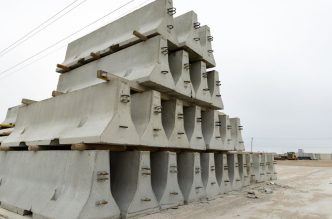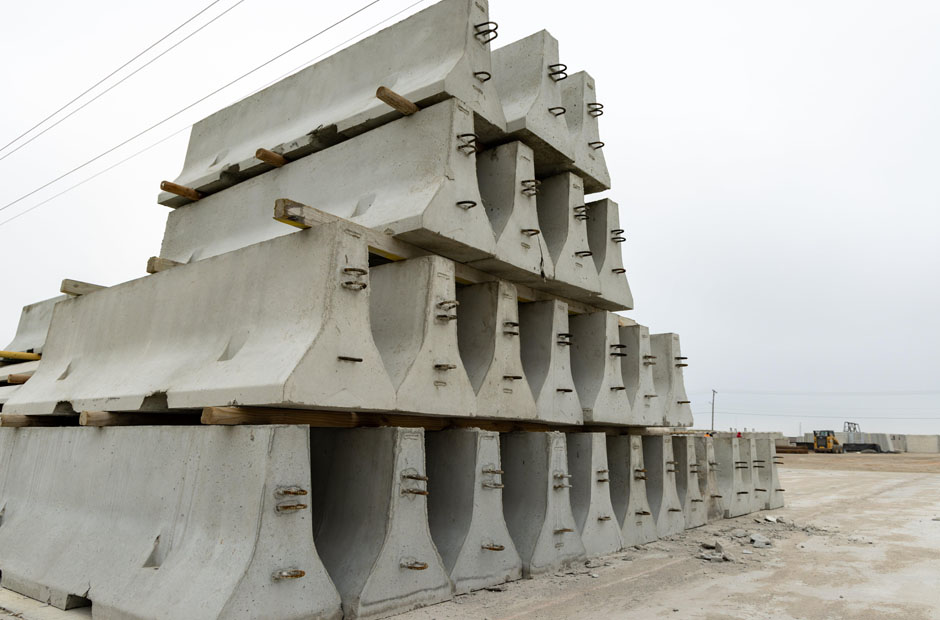Choosing the right concrete barrier requires more than just picking a standard design. Each project has unique needs, and the barrier must match those demands to provide safety, durability, and long-term value. The best choice comes from understanding how different features affect performance, safety, and cost.
A well-selected barrier supports traffic control, protects work zones, and creates secure boundaries in both temporary and permanent settings. By looking at factors such as material quality, impact rating, and manufacturer standards, anyone can make a choice that serves the project effectively and meets safety requirements.
Durability and Material Quality
Durability depends on the mix design, cement type, and aggregate quality. A well-balanced water-to-cement ratio prevents cracking and extends the service life of the barrier. Proper curing also plays a direct role in maintaining strength over time.
Environmental exposure should guide material choice. Barriers exposed to heavy traffic, freeze-thaw cycles, or chemical contact need higher-grade mixes that resist wear and surface damage. This helps maintain both function and appearance.
Reinforced or high-performance concrete often provides longer-lasting results for demanding conditions. Lightweight options may be useful in projects where insulation or easier handling matters, but strength must remain a priority.
Contractors and project managers can get quality concrete barriers from 48 Barriers to meet these standards. Choosing products that already comply with industry specifications reduces the risk of early deterioration.
Testing methods, such as compressive strength checks, confirm the barrier’s quality before installation. With careful selection, the material can withstand decades of use without major repair.
Impact Rating and Safety Standards
Impact rating shows how well a concrete barrier can handle a vehicle strike. Different ratings measure the speed and weight a barrier can resist without failing. This helps site managers match the barrier to the level of risk on their property.
Standards such as ASTM and MASH set clear testing methods for barriers. These guidelines define how barriers should perform under specific crash conditions. By following these standards, manufacturers provide products that meet consistent safety expectations.
PAS 13 and ANSI guidelines also address barrier testing for industrial and workplace use. They create a common reference point so that buyers can compare products with confidence. This reduces guesswork and supports safer decision-making.
Highway and roadside barriers often need higher ratings than barriers used in warehouses or parking areas. Therefore, the choice depends on location, type of traffic, and potential hazards. A barrier with the right impact rating helps protect both people and property.
Purpose: Temporary vs. Permanent Use
The first step in choosing a concrete barrier is to define its purpose. Temporary barriers serve short-term needs such as road construction, events, or projects that require frequent adjustments. They allow crews to move or remove them without major effort, which makes them cost-effective for limited use.
Permanent barriers, on the other hand, provide long-lasting protection. They are best for highways, bridges, and areas where traffic safety must remain constant. These barriers are heavier, more secure, and built to withstand years of wear without frequent replacement.
Project duration often guides the decision. Short projects with changing layouts benefit from temporary barriers, while long-term infrastructure requires permanent ones. In addition, traffic speed and volume influence the choice, since higher-risk areas demand stronger and more stable solutions.
Budget also plays a role. Temporary barriers usually cost less upfront but may not deliver the same long-term value. Permanent barriers require a larger investment but reduce replacement and maintenance over time.
Size and Weight Specifications
The size of a concrete barrier directly affects how it performs in different settings. Taller barriers provide more protection against vehicles, while shorter ones may be better suited for temporary or low-traffic areas. Project needs should guide the choice of height and length.
Weight plays an equally important role. Heavier barriers, such as a 4-foot Jersey barrier that weighs about 1,620 pounds, offer greater stability and resist movement on impact. However, lighter barriers may be easier to transport and install, which can reduce setup time.
Contractors must balance weight with handling requirements. A barrier that is too heavy may require specialized equipment, while one that is too light may not stay in place under pressure. Therefore, both the installation process and safety expectations should influence the final decision.
Standard specifications often list the concrete volume and weight per unit. Reviewing these details helps determine whether a barrier meets both structural and logistical needs. Accurate sizing and weight selection improve performance and reduce long-term issues.
Manufacturer Reputation and Warranty
A strong manufacturer reputation often reflects consistent quality and attention to detail. Buyers tend to trust companies with proven experience because past performance signals how well future products may hold up. This trust can make a difference in long-term satisfaction.
Warranty coverage also plays an important role. A clear and fair warranty shows that a manufacturer stands behind its concrete barriers. It reduces risk for the buyer by offering protection if defects or early failures occur.
Reputation and warranty often work together. A manufacturer with a positive track record usually provides better warranty terms, which signals confidence in the product. As a result, buyers gain both peace of mind and a safeguard for their investment.
Consumers should compare warranty length, coverage details, and claim processes. A longer or more thorough warranty can indicate higher product quality. However, the reputation of the company matters just as much, since even the best warranty is only useful if the manufacturer honors it.
Conclusion
A high-quality concrete barrier must match the specific needs of the project. Factors such as purpose, traffic speed, and site conditions all play a direct role in the right choice.
Durability, impact rating, and size should guide the selection process, while cost and installation requirements also deserve attention.
By weighing safety, function, and long-term use together, decision-makers can choose a barrier that performs well and meets project goals.














